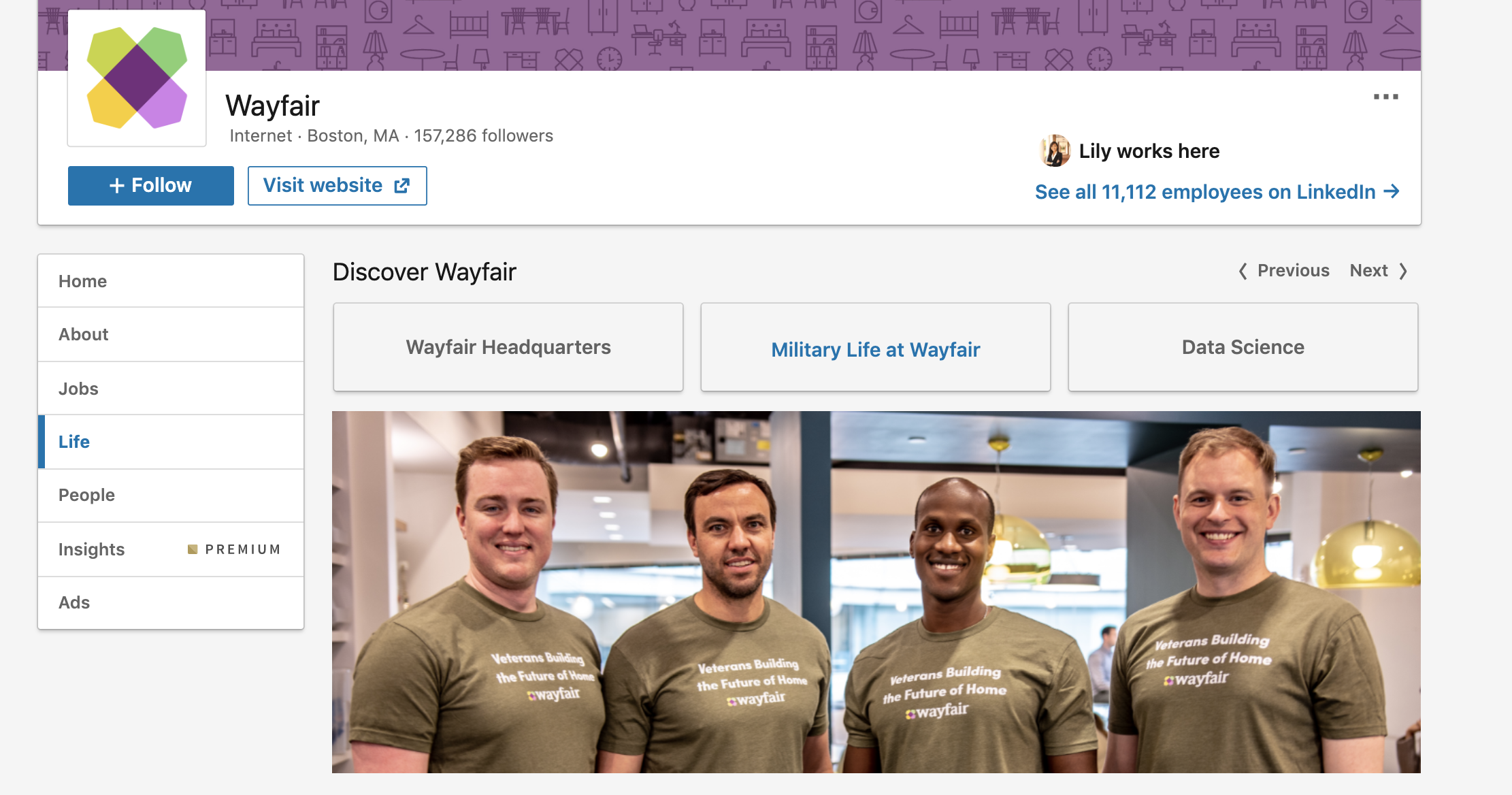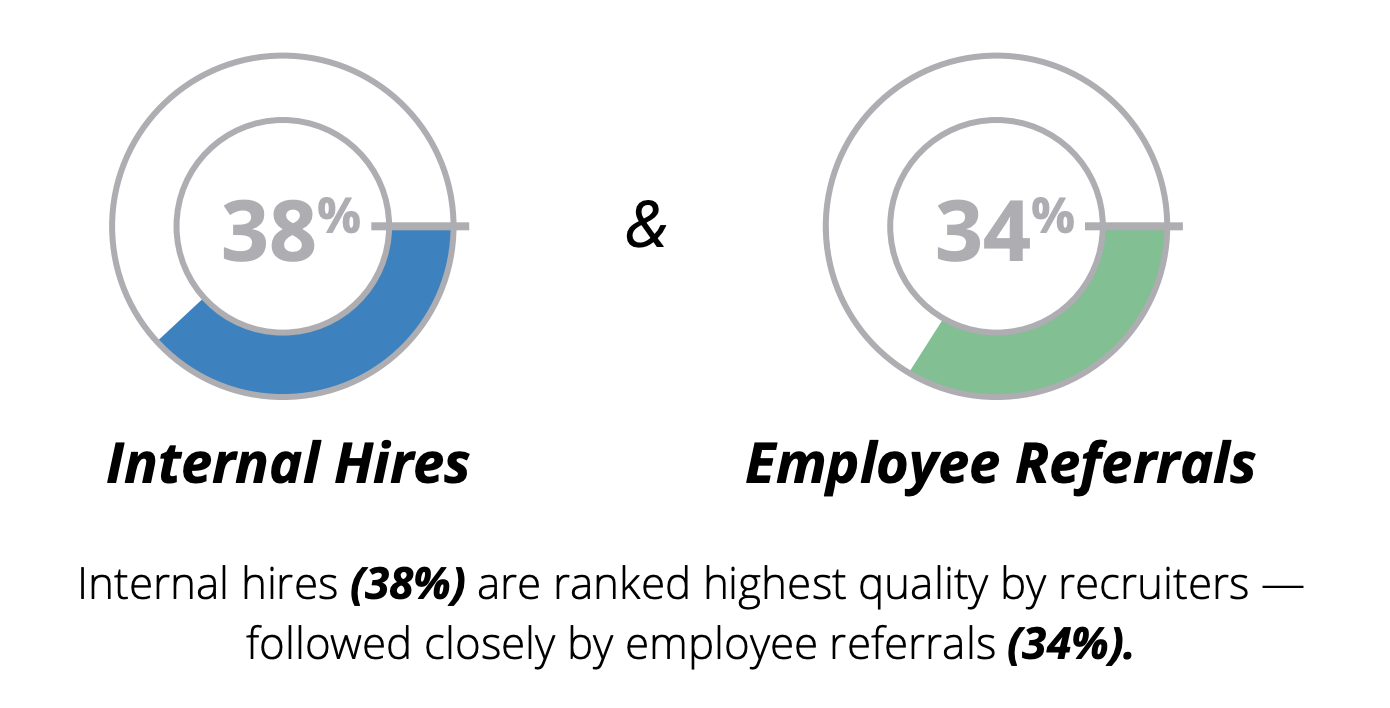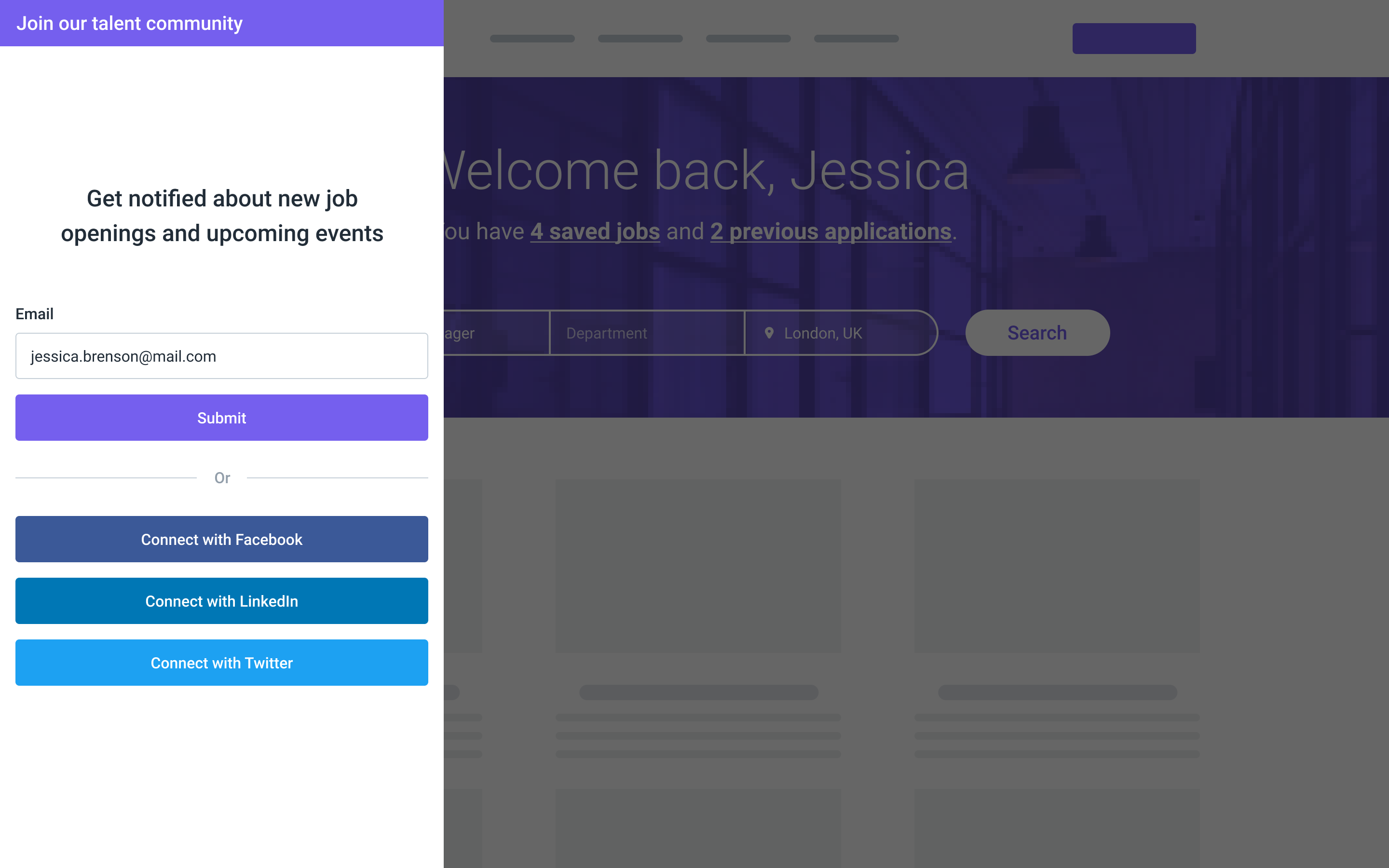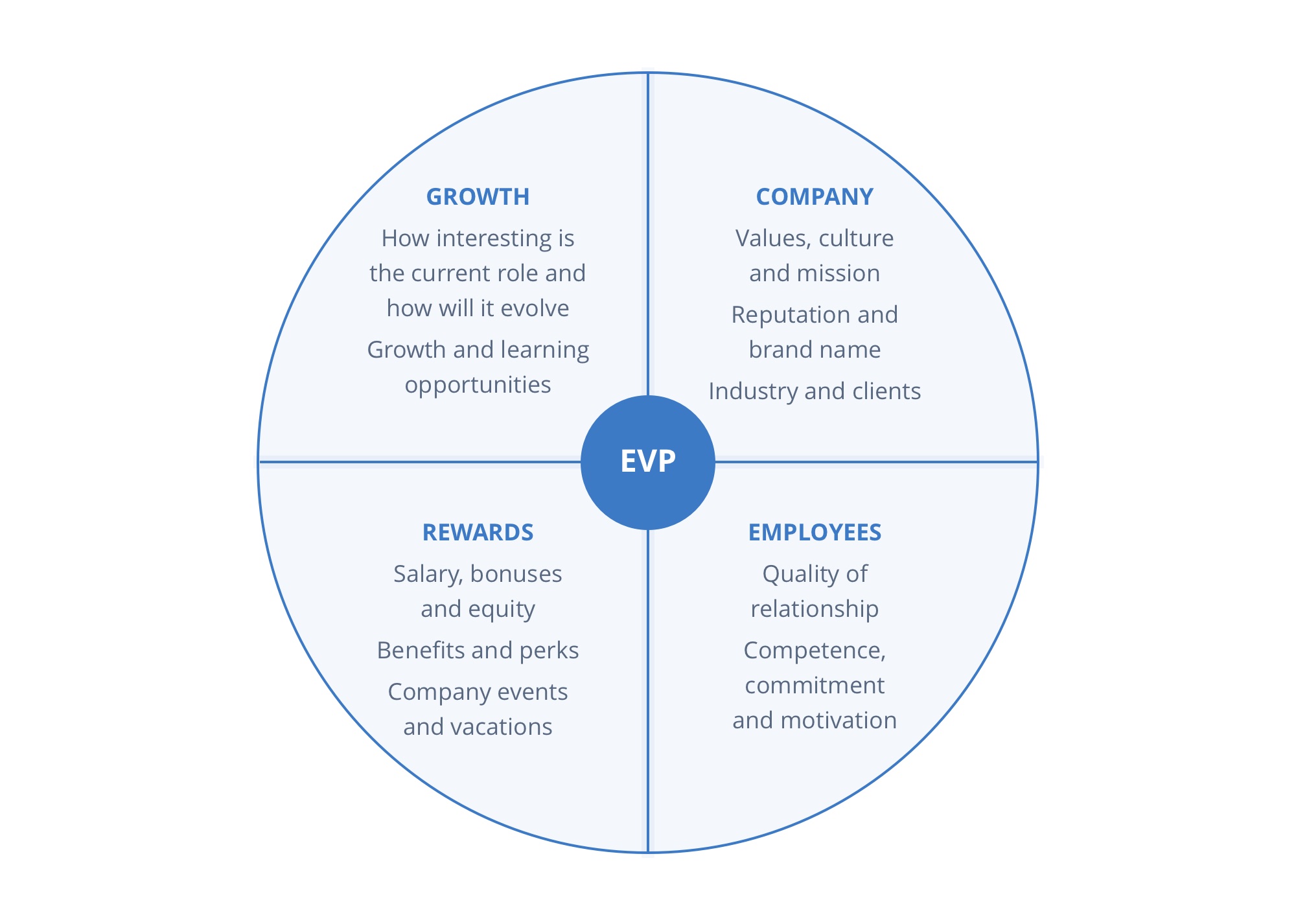Highlighting the Careers Site Experience in your Candidate Journey

How does your careers site experience stack up against the competition?
Even the best talent teams are always looking for ways to improve the experience their careers site offers to candidates. They know the competition for great talent is fierce and always pushing the bar higher, but also that it’s hard to pin down the perfect journey, and to replicate it every time, for every visitor.
Every company already has a candidate journey, but not all of them have deliberately built theirs, by thinking through possible steps, building paths from an event to a web page to an email to another web page…

There is no master recipe that can solve every recruiting journey problem, but when helping teams develop their talent strategies through Beamery Digital, we’ve seen a lot of success with simple frameworks that are not necessarily comprehensive, but are easy to apply and iterate on.
The 3-1-3 framework is a great example of this. It’s basically a process where you put a point of choice in the center of your journey, then identify three entry points and three exit points. From there, you have a small but functional “section” of the journey that you can focus on to eliminate painful transitions, or identify where information is not properly communicated or where handoffs are sloppy.
Using the 3-1-3 framework for the careers site experience
There are many ways a candidate can land on your careers site, but for the purpose of this exercise, it’s important to focus your effort on only a few of them.
The goal of the 3-1-3 exercise is to put yourself in the shoes of a lead who is travelling through each one of these 3-step paths, and to experience what they would be experiencing.
Every entry point needs to offer two things: The information the candidate came looking for, and the CTA that will take them to your Careers Site. Every exit point needs to achieve one of two goals: keep the candidate engaged in some way so that they can come back later to become an applicant, or convert the candidate to an application right away.
Entry point 1: Linkedin
Whatever your opinion of the world's largest professional network, you cannot deny that recruiting on LinkedIn should be part of any company's recruiting strategy. Not only does it advertise your jobs in a convenient and highly searchable way, it makes it easy for candidates to get a quick snapshot on your company from one look at its Linkedin page.
A few things to consider here:
The About section
The About section is easy to neglect and to fill with 200 filler words, and to be fair, it probably doesn’t get a huge amount of traffic–which makes it a perfect low-hanging fruit!
Why would someone click on it? They are either not familiar with your company and need a basic introduction, perhaps after one of your jobs popped on their job search, or they are an extremely thorough candidate who likes to do extensive research before applying.
In either case, a short, to-the-point introduction of your company is necessary, mentioning what the main products are, main markets, industry or sector, and perhaps a couple of differentiating facts that will make the reader feel like they found an interesting easter egg to reward their search.
the Overview section has a field where the company can enter a website–that's a great spot for your Careers landing page, and provides an easy next step in the careers site experience.
The Life section
This is the one section on your Linkedin page where you can best curate the company's image, so it's worth doing a little bit of research, or inviting the marketing team to offer pointers. Many top companies have dedicated content for the Life section, but you can definitely recycle photos, design assets, or videos from other recruiting workstreams: event recordings, banners, employee event photos...
Not to mention, you can create targeted sections for specific affinity or skill groups, like Wayfair did with Veterans and Data Science profesisonals.

It's also where you can leverage employee activation for the benefit of the company by sharing testimonials. Take a look at the example below from Microsoft:

Entry point 2: Recruitment Events
Recruiting events are likely a strong part of your journey, and the best way to source targeted candidate populations, and create an opportunity to have an in-person experience with great talent.
Transitions from off-line to online (and vice-versa) in the candidate journey are sometimes tricky, and it definitely helps to have a solid recruiting events strategy in place to facilitate that transition.
The event itself should give candidates what they are looking for: information about the company, its culture, the type of people it hires...but as a part of the overall careers site experience, the event needs to offer a clear path to the next step.
The easiest way to do this is to send a personalized follow-up to event attendees, inviting them to discover your careers site to learn more about specific areas of interest.
Entry point 3: Referrals
There are a host of good reasons to invest into hiring based on referrals from employees, and plenty of data points, examples and studies to build a case for it internally.
For one, in most cases it’s cheaper to hire using referrals, even when a referral bonus is offered for every signed offer. It’s easy to see why when comparing the cost of a referral to that of a recruiting agency, but even when comparing with the costs of in-house recruiting, referrals take less time and cost less.
In addition to that, referral hires tend to be of higher quality. Recruiters rank them only second to internal hires in that regard, in fact.

It makes sense, as they tend to onboard faster because they already have an ally and friend in the company to answer their questions. They are better informed about the company before applying, and are therefore more likely to “outperform other employees on most aspects of company fit.”
Now the question is: what is the Careers site experience that referred candidates go through? If they have been referred by someone, chances are, they already know the company, have been on the careers site many time, and especially on the job application they are aiming for.
At this point, the goal is to make sure that the process brings in these prized candidates smoothly and with a minimum of hoops to jump. For example, create referral links that are tailored to specific positions on the careers site, and not onf the main landing page.
And that's the third of the 3-1-3 entry points in this example. If done right, it should have enabled the team to identify awkward or low-visibility CTAs, and made it easier for candidates to move from each entry point to the careers site and find what they are looking for.
Exit point 1: Job descriptions
The job description pages are probably the most visited pages of your career site, and their composition is extremely important. We’ve written a bunch on what makes a great job description, as the subject is worth a few blog posts of its own.
In the 3-1-3 exercise, however, the goal is to make sure that whenever a candidate comes to your career site, they can easily go to the job descriptions they're looking for.
Some companies list job openings on the career site landing page itself, but organizing them in a separate section, with a search tool and targeted sections, makes for a better overall careers site experience. Just make sure that the link to that job section is easy to find immediately upon arriving on the careers site.

[source]Amazon's job search section [source-end]
Exit point 2: Talent networks
It is rare for a candidate decide to apply to a company right after first learning about it. They might come to the career site, read a few job descriptions, even click on an application link, but they will then leave, making a mental note to come back later. That is why Talent networks are so valuable.

The talent network might not convert the candidate to an immediate job application, but they will help keep them engaged. Make the sign up process intuitive and smooth, by allowing candidates to subscribe using their Linkedin profile, for example, and by keeping the steps and form fills to an absolute minimum.
Exit point 3: Employee value proposition
The Employer Value Proposition, or EVP, is how you give voice to your employer brand using concrete aspect of the company life.

It can be displayed clearly in a section of the career page as a small paragraph, but you can also create a dedicated page for it, and give candidates a place to hear you describe in your own words why they should join you.
It can be a full memorandum or a separate page with sections on different types of health, career, and social benefits. It can include quotes or interviews with employees, or even statistics about positive aspects of the work environment, such as diversity, inclusion, community work, corporate responsibility initiatives, innovation…
The format is not as important as the message itself; as long as candidates coming to the career pages find their way easily to it, and leave it with a clear understanding of what they would get from joining your company, the EVP has played its role.
[tweetery]“EVP is a unique set of offerings, associations and values to positively influence target candidates and employees.” -Universum[tweetery-end]
Don't forget to redirect visitors to the EVP page to a talent network signup CTA, or to the Job search page itself, to ensure that they have a clear next step to keep them in the loop.
Where to next?
The 3-1-3 exercise is designed to be extremely simple, but you can add a layer to it by considering personas. By creating a few candidate personas and going through the exercise for each of them, the talent team can create an more personalized careers site experience, which is fast becoming necessary to snag the best talent.
Another important step is to consider success metrics for this exercise. How do you know your careers site experience is getting better? You can look at attribution metrics for careers site conversion, of course, but also at overall candidate experience, with targeted surveys shown to visitors or sent talent network subscribers.
Recruiting Events - The Complete Playbook
Talent teams of every size can find value in this ebook, but it is especially targeted at sophisticated teams who want to leverage the technology and candidate data at their disposal to create highly effective event programs. It contains an exploration of the different types of events and how to best use them, checklists for event set up, project management tips, collaboration, event follow-up, not to mention metrics and best practices for measurement.
